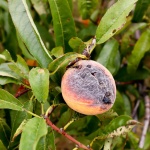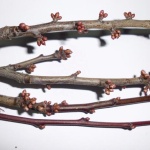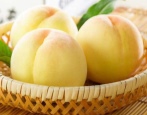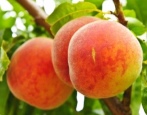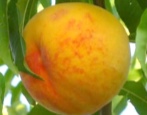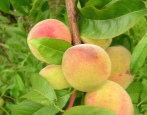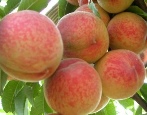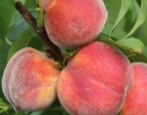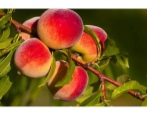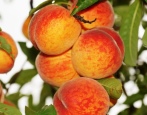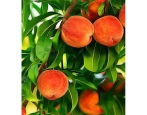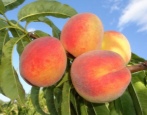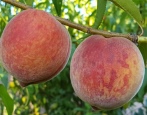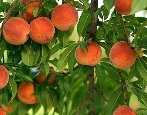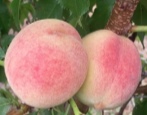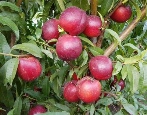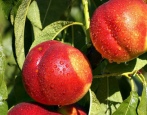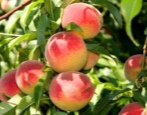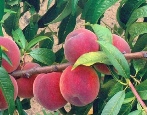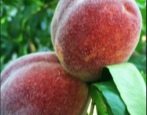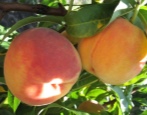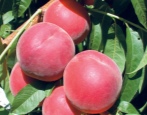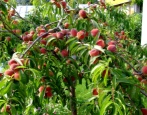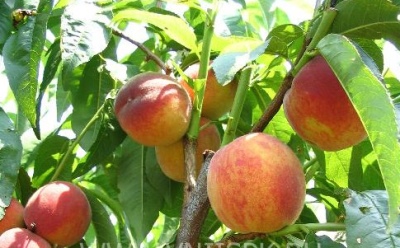
- Authors: Italy
- Appeared when crossing: Gelia di Firenze x Fertili Moretini
- Name synonyms: Favorite of Moretini, Favorite of Morettini, Favorita Morettini
- Year of approval: 1987
- Growth type: medium-sized
- Ripening period: very early
- Self-fertility: self-fertile
- Appointment: table, for fresh consumption, for canning, for making juices
- Yield: high
- Marketability: high
Peach variety Favorit Morettini - originally from Italy, but quite widespread in Ukraine and in the southern regions of the Russian Federation. It matures extremely quickly, which conquers even the most critical gardeners.
Breeding history
The Italian variety Favorit Moretini, or Favorite Morettini, was included in the State Register of Varieties in 1987. Prior to that, he was on state variety trials for 18 years. The parents of the variety are Gialla di Firenze (Gela Di Firenze, which means Yellow from Florence) and Fertilia Morettini (Fertilia Morettini, this is a proper name, in honor of the creator of the variety A. Morettini).
Description of the variety
The tree is active, vigorous, 3-4 m, the crown is harmonious, rounded. The leaves are long, narrow, bright green. The flowers are bell-shaped, dark pink, very decorative. The tree blooms in the second half of April.
Fruit characteristics
Medium-sized fruits, 70-90 g each, can reach 120-150 g, round, slightly elongated, with a small pointed tip. There is a well-visible, but not too deep seam in the center. The skin has a delicate, pleasant pubescence, not too thick, peels off very well. The skin color is yellow, with an irregular red blush. The blush can take up most of the entire fruit. The pulp is yellow. The stone is medium in size, does not separate from the pulp. The pulp is juicy, but firm enough, perfectly tolerates transportation. At room temperature, the fruits do not lose their qualities within 3-4 days after removal.
Taste qualities
The taste is very good. The peach is sweet, with sourness, fragrant, with a delicate, moderately fibrous pulp, juicy and pleasant in taste. The fruits are universal, they are eaten fresh, added to fruit salads, desserts, baked goods, canned, made jams, preserves, marmalades, juice. They are suitable for curing and drying.
Ripening and fruiting
Ripening period is very early. Fruits begin to shoot in early July, and continue to do so for 1 month. The early maturity is high - you can start receiving fruits from a 3-year-old, and sometimes from a 2-year-old tree. Of course, the correct formation and calculation of the load on the tree is important. This affects the yield, fruit size, early maturity.
Yield
The yield is high. 25-30 kg are removed from 1 tree, in the most fertile period, after 10 years - an average of 40-50 kg.
Growing regions
The variety is recommended for cultivation in the North Caucasus region, as well as in the Krasnodar Territory, in the Stavropol Territory, in the Crimea, in the Republic of Adygea. Can be grown in the south of the Rostov region under cover. In other regions of the Russian Federation, crop cultivation is risky.
Self-fertility and the need for pollinators
The variety is self-fertile, does not need pollinators. However, to increase yields, other varieties are planted nearby, blooming at the same time. Can be a good pollinator for other early flowering varieties.
Growing and care
In suitable climatic conditions, the plant is unpretentious. Favorite Morettini is a well-proven variety, healthy, strong and tenacious, it does not require the same maintenance as other peaches.
The landing site is sunny, sheltered from the wind, preferably on a hill or slope. Peaches do not like low-lying areas with stagnant water. The soil is light, well-drained.Saplings are planted in the fall, a month before the onset of frost, at a distance of 3 m from each other. The grafting is optimal for wild apricot (pole).
To increase pollination, it will be useful to plant melliferous plants in the trunk circle - they will attract bees.
Pruning is done annually, in spring and / or fall. All types of pruning will be required: sanitary, shaping, thinning. Forming is performed in spring, in autumn - sanitary. During the year, plants must be examined, and affected or dried branches are removed - they are a source of infections.
In the south, they are formed in the form of a bowl, cutting out the center and leaving up to 6 skeletal branches. In areas where the peach may freeze, it is best to grow a tree in a creeping or bush form, leaving 10 branches each. At the same time, old branches are regularly removed.
The variety is moderately drought tolerant. Water it 2-5 times a year, depending on the summer. After watering, fertilizers are applied, for example, a nitrophoska solution. Particular attention is paid to watering young trees, adults water less often, mainly only in the first half of summer. Excess moisture in the second half of summer can lead to the growth of shoots that do not have time to ripen before autumn. The tree will spend a lot of energy.
In dry autumn, water-charging irrigation is mandatory, then mulch.
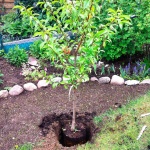
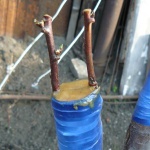
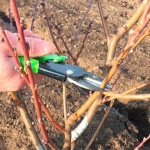
Frost resistance and the need for shelter
The winter hardiness of the variety is average. After the last watering, a layer of peat or humus of at least 5 cm is poured onto the trunk circle. Young trees are protected with a special frame covered with agrofibre. In the future, you can cover the trunk with cardboard or burlap, cover the near-trunk circle with sawdust or shavings. The shelter can be made to your taste, from any materials - the main thing is that they protect from insects, fungi, animals, while being breathable, do not create conditions for overheating or overheating in spring. In the first case, the plant may even die - the peach, like the apricot, is sensitive to damping, in the second, there is a risk that the plant will bloom too early in spring, and return frosts will ruin the future harvest.
Disease and pest resistance
The variety is quite resistant to diseases. As a preventive measure, the tree is sprayed with Bordeaux mixture in the spring, with "Fitosporin" during the year, and with "Trichodermin" or "Phytocide" in the fall. They carry out the usual agrotechnical measures: in the fall, they remove and burn all the foliage, whitewash the trunks, dig up the soil, mulch only with fresh materials. Against gray rot (moniliosis), which can infect fruits, spray with Topaz immediately after flowering, then repeat twice after 2 weeks. The disease is caused by a fungus that hibernates in the soil, having got into it from already infected fallen fruits. Therefore, as a preventive measure, they remove all the carrion, then in the future they carefully examine the harvest.The disease is easily noticed by the small dark areas on the fruit. Particular vigilance should be exercised in years with wet and cool springs.
Reviews
Reviews are conflicting. Gardeners appreciate the variety for its good taste, it is indeed excellent, but the fruits are small. Some people highly appreciate only its early maturity, write down everything else as a disadvantage, saying that there are better varieties. The variety freezes in the spring and is strongly affected by moniliosis. Some gardeners noted that the health of the variety is at a good level - it does not require more processing than any other varieties or grapes.
There are also different opinions about the yield: from outstanding to satisfactory. Everyone unanimously notes precocity and early maturity as a plus - many peaches, of course, are larger and tastier, but they ripen at best a month later. Favorite Morettini will be ideal for those who are trying to grow a crop such as a peach for the first time and want to get fruit as quickly as possible. For an early variety, it is good - the fruits are tasty, abundant, versatile.
